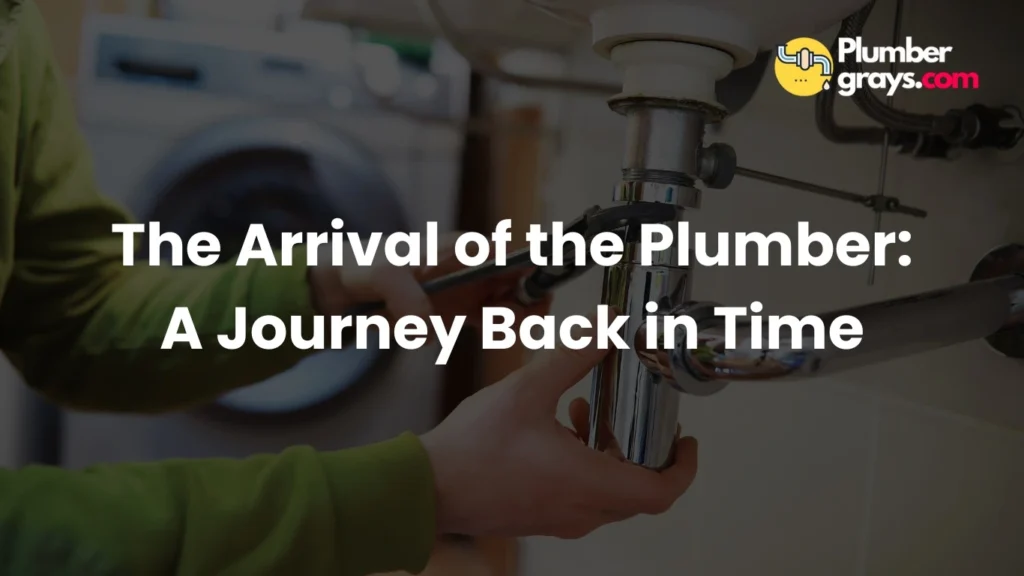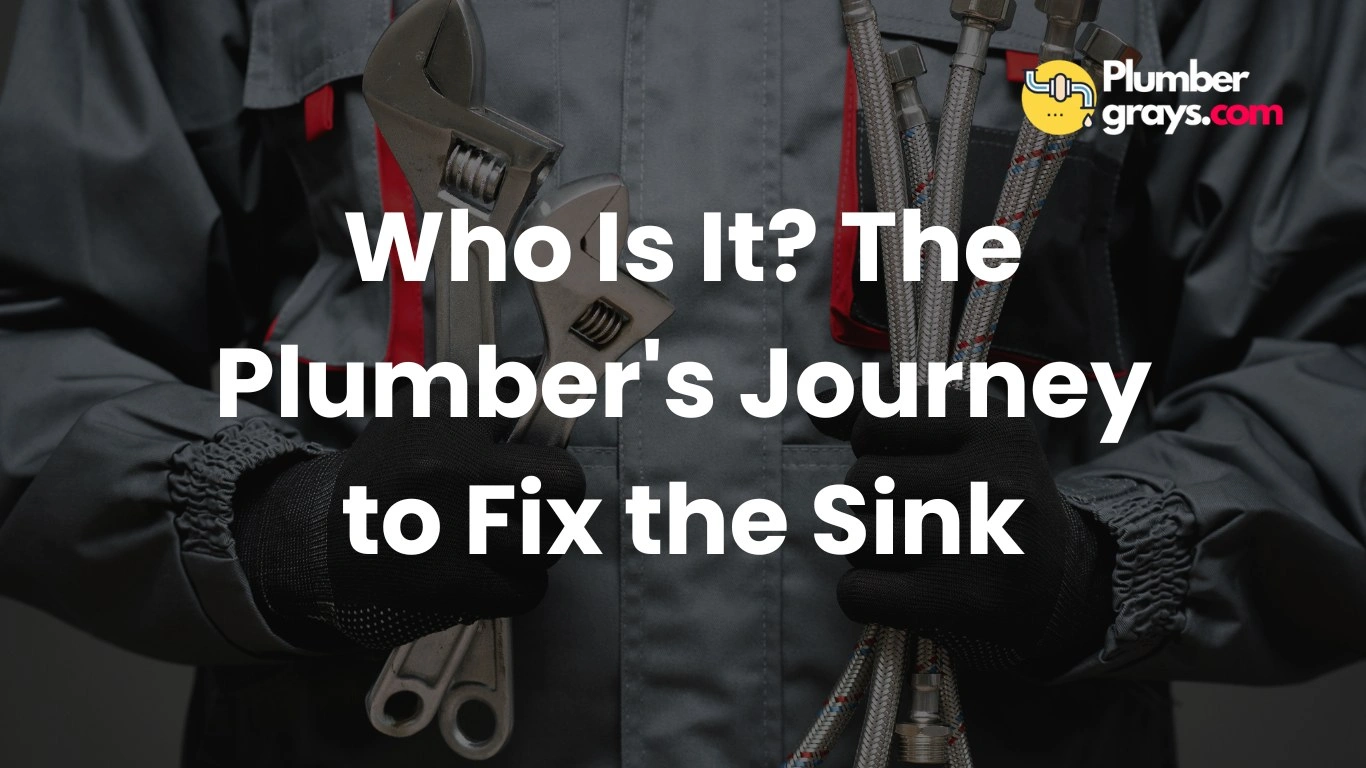Plumbing, making up about 15% of a home’s value, underpins the importance of maintaining an efficient system for the benefits of clean drinking water, good pressure, and the convenience of modern living. Ensuring regular maintenance can prevent significant damage, saving homeowners from the inconvenience of emergency plumbing and costly repairs.
This article embarks on the narrative journey of a plumber, reflecting not just on the technical task of fixing a sink but also on the broader implications of plumbing maintenance, including the role it plays in preserving a home’s value and the peace of mind it brings to homeowners. It draws upon the essence of “Who is it? It’s the plumber, I’ve come to fix the sink,” echoing childhood memories of Sesame Street, blending nostalgic elements with the critical importance of timely repairs to avoid plumbing emergencies.
The Plight of a Broken Sink
In navigating the complexities of a broken sink, it’s crucial to understand the common pitfalls that lead to such predicaments. Here’s a breakdown:
Common Causes and Solutions:
- Clogged Drains:
- Causes: Improper disposal of fat, grease, oil, animal bones, coffee grounds, eggshells, produce stickers, paper towels, and napkins can lead to severe clogs.
- Solution: Avoid flushing these items down the drain and call a plumbing expert for severe clogs.
- Leaky Faucets:
- Causes: Loose handles, worn-out washers, broken cartridges, inconsistent water pressure, and dirty faucet heads contribute to dripping faucets.
- Solutions: Tightening loose parts, replacing faulty components, cleaning faucet heads with white vinegar, and consulting a plumber for complex issues.
- Garbage Disposal Malfunctions:
- Causes: Electrical issues, damaged motor blades, and the misuse of garbage disposal units.
- Solutions: Resetting the disposal system, fixing wiring, or replacing damaged parts. Avoid using the disposal when it’s not functioning correctly.
Addressing these issues promptly can prevent further damage, such as burst pipes or corroded materials, ensuring the longevity and efficiency of your plumbing system.
The Arrival of the Plumber: A Journey Back in Time

As the plumber arrives, it’s not just a routine visit but a journey back through the annals of plumbing history, a testament to human innovation and the relentless pursuit of comfort and hygiene.
- Early Innovations: The inception of plumbing traces back to ancient civilizations, with the earliest pipes made from a simple concoction of baked clay and straw. The Egyptians advanced the craft, introducing the first copper pipes, while the Greeks and Romans further refined plumbing, mastering hot and cold running water and establishing sophisticated water distribution systems through lead lines from mountain sources to cities.
- Revolutionary Milestones: The evolution of plumbing saw significant milestones, including the creation of the first flushable toilet presented to Queen Elizabeth I and the pioneering of the first water system in Boston during the mid-1600s. These pivotal moments marked the beginning of modern sanitation, with the invention of the valve-type flush toilet in 1738 and the patenting of the flush toilet in 1775, laying the groundwork for the plumbing systems we rely on today.
- Modern Advancements: The journey of plumbing innovation did not halt; it accelerated, introducing the first integrated sewer system in Chicago, the creation of the first cast iron bathtub, and the inception of water conservation laws. These advancements underscored the critical role of plumbing in urban development and public health, culminating in the introduction of low-flow toilets and smart toilets designed to conserve water and enhance efficiency.
This historical panorama highlights the plumber’s role not merely as a fixer of leaks but as a bearer of a legacy that spans millennia, continuously evolving to meet the demands of modern society.
Inspiration Strikes: Culinary Creativity in Crisis
Amid a plumbing crisis, culinary creativity often takes a backseat. Yet, this doesn’t mean that meals have to become a monotonous chore. Here are some innovative, no-cook meal ideas that not only save time but also introduce a burst of flavor to your dining table:
- Quick Deli Sandwich Combo:
- Grab a sandwich from the grocery store’s deli section.
- Pair it with chips and a beverage of your choice for a complete meal.
- For larger families, opt for a longer baguette and customize it with various toppings. Add a jar of Italian dressing for an extra flavor kick.
- DIY Meal Prep Kits:
- Utilize meal prep containers with three compartments.
- Fill each section with a variety of foods such as summer sausage, cheese, olives, and almonds, making it more cost-effective than pre-packaged options.
- Effortless Gourmet Meals:
- Purchase pre-cooked or frozen meals from Costco, which are convenient and easy to heat.
- For days when illness strikes, keep it light with a couple of cans of soup and a salad from the deli section. The salad can be refrigerated, and the soup heated when ready to eat.
- Create a pita sandwich kit using pre-cut pitas and a premade Caesar salad kit for a fresh and easy meal option. Garnish with croutons or parmesan cheese for added texture and flavor.
These meal ideas not only cater to the need for convenience during unexpected household repairs but also ensure that mealtime remains a delightful experience.
Cold Meals to Beat the Heat
As the summer heat intensifies, the appeal of no-cook meals becomes undeniable. Here are some refreshing dishes that promise to keep the kitchen cool and your palate delighted without the need for any heat:
- Chilled Soups and Salads:
- Chilled Cucumber Soup: A blend of cucumbers, yogurt, lemon juice, garlic, salt, and ice cubes offers a cool respite from the heat.
- Classic Cobb Salad: Combines hard-boiled eggs, avocados, cherry tomatoes, blue cheese, bacon, and chicken breast for a fulfilling meal.
- Chef John’s Gazpacho: Keeps well in the fridge, making it a go-to for a refreshing cold soup that can be enjoyed over a few days.
- Innovative Wraps and Sandwiches:
- Grilled Shrimp Lettuce Wraps: Features grilled shrimp, cilantro, and quick pickled veggies, all wrapped in crisp lettuce leaves.
- Real N’awlins Muffuletta: A hefty New Orleans sandwich that can be prepared ahead and refrigerated, perfect for a grab-and-go meal.
- Creative Salads and Bowls:
- Mint and Melon Fruit Salad: A delightful combination of summer melon, blueberries, and fresh mint leaves, offering a sweet and minty flavor.
- Quinoa and Shaved Carrot Salad with Chickpeas, Currants, and Cashews: Mixed with a cumin-coriander dressing, this salad is both nutritious and flavorful.
- Watermelon Poke Bowls: A quick concoction of watermelon, avocado, cucumber, and a soy-ginger dressing, ready in less than 30 minutes.
These dishes not only provide relief from the summer heat but also ensure mealtime remains a vibrant and enjoyable experience, even when the thought of turning on the stove is unbearable.
Conclusion
Throughout the narrative, we’ve journeyed with a plumber, delving into the intricate world of plumbing—a fundamental aspect of modern living that ensures our homes are comfortable and functional. From the common pitfalls leading to emergency repairs to the profound history of plumbing innovation and the creative culinary solutions during a sink fix, we’ve explored how the maintenance of our plumbing systems is more than mere convenience; it’s a cornerstone of our daily well-being and the preservation of our homes’ value.
Emphasizing the importance of regular plumbing maintenance and the potential of no-cook culinary creativity, we are reminded of the interconnectivity of our homes’ functional integrity with our lifestyle quality. These reflections not only spotlight the broader implications of diligent home maintenance and inventive meal preparation but also encourage us to appreciate and invest in the upkeep of our living environments and the enhancement of our mealtime experiences, nurturing both our homes and our families with care and foresight.


Comments are closed